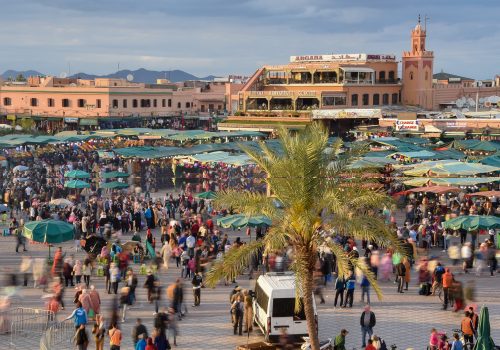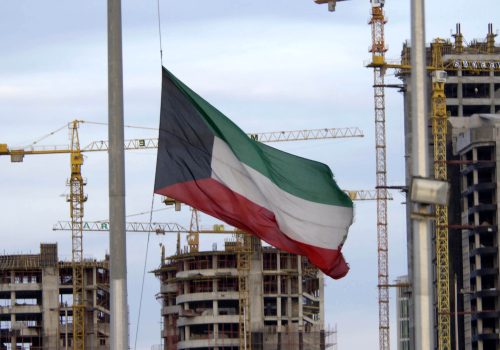Climate change is a pressing global calamity with extensive and varied implications, profoundly affecting both the economy and social fabric of Saudi Arabia. Given the Kingdom’s unique geographic location, economy, and social context, the impacts of climate change are particularly significant for Riyadh. At the same time, the situation creates a significant opportunity for economic diversification for the kingdom. Thus, the Saudi Vision 2030 framework emphasizes the development of non-oil sectors, including tourism, manufacturing, and finance, to create a more resilient and sustainable economy. This diversification is crucial, as fluctuations in global oil prices, compounded by the environmental effects of fossil fuel extraction and use, pose important economic risks to the country.
Rising temperatures
Rising temperatures are one of the most direct and immediate impacts of climate change felt in Saudi Arabia. The Kingdom experiences some of the highest average temperatures in the world, and climate projections indicate a potential rise of up to 5.6°C by the end of the century under the most severe scenarios. This increase in temperature exacerbates existing challenges, such as the extreme heat experienced during summer months, which can surpass 50°C. These conditions pose significant health risks, increase the demand for energy and air conditioning, and reduce outdoor labor productivity.
Water scarcity
Due to its arid geography, Saudi Arabia is one of the most water-scarce countries globally, with limited renewable water resources and heavy reliance on non-renewable groundwater and desalination. Reduced rainfall and higher temperatures, due to changes in climate, are expected to exacerbate water scarcity. The projected decrease in precipitation and increase in evaporation rates caused by higher temperatures further strain the already limited water resources. King Abdullah University of Science and Technology (KAUST) reports a projected decrease in annual precipitation by 5-10 percent by 2050, coupled with a temperature rise of 2-3°C. This could reduce overall water reserves for agriculture by 15-20 percent. As a result, up to 25 percent of Saudi Arabia’s arable land will be at risk of desertification due to rising temperatures and changing precipitation patterns.
Public health and livability
Climate change poses significant public health hurdles in Saudi Arabia. Rising temperatures and deteriorating air quality exacerbate respiratory conditions and heat-related illnesses. The health sector is under pressure to adapt by improving healthcare infrastructure and services to manage these increasing health risks. Additionally, climate change affects the livability of urban areas, prompting initiatives to create greener, more sustainable cities that can better sustain the well-being of their inhabitants.
Socioeconomic inequalities
Climate change can aggravate socioeconomic inequalities in Saudi Arabia, as vulnerable populations are often the most affected by its impacts. Rural communities, dependent on agriculture and lacking robust infrastructure, are particularly vulnerable to climate-related disruptions. The government is implementing policies aimed at supporting these communities and enhancing their resilience through improved infrastructure, social services, and diversifying economic opportunities.
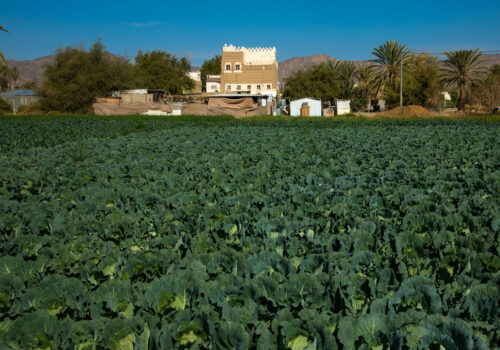
Agriculture
Saudi Arabia, faces profound challenges in its agriculture sector due to climate change. Although agriculture constitutes a small fraction of the country’s GDP (less than 3 percent), it is vital for food security, rural livelihoods, and the diversification goals under Vision 2030.
Read more
The agriculture’s sector’s heavy reliance on scarce water resources makes it particularly vulnerable to climate-induced changes. Agriculture consumes approximately 85 percent of the country’s water resources, primarily for irrigation. The agriculture sector in Saudi also provides livelihoods for a significant portion of the rural population. Climate change accelerates soil degradation in processes such as salinization, erosion, and desertification, which diminishes the quality and productivity of arable land in Saudi Arabia.
Higher temperatures and water stress will also reduce crop productivity. Key crops like wheat, dates, and vegetables are particularly going to be affected by these conditions. Based on recent statistics, wheat yields are expected to decline by 20-30 percent by 2050 due to heat stress and insufficient water for irrigation. Similar reductions are expected for date palms and other staple crops. Declining agricultural productivity increases reliance on food imports, raising food prices and increasing the risk of food insecurity in the country. Additionally, rising temperatures and altered rainfall patterns can enhance the survival and reproduction rates of pests and pathogens, posing additional threats to crop health. KAUST data suggests a potential increase in pest populations by 15-20 percent due to favorable climatic conditions, which could lead to higher crop losses and increased pesticide use.
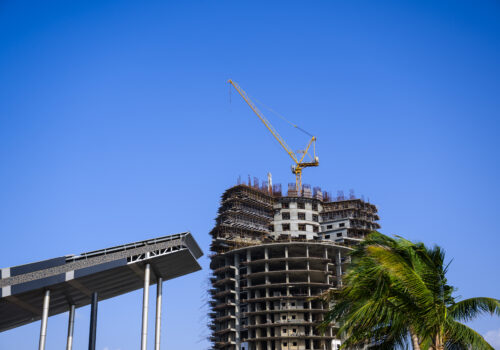
Construction
The construction industry in Saudi Arabia is a key driver of economic diversification under Vision 2030. The construction sector is expected to grow from USD 70.33 billion in 2024 to USD 91.36 billion by 2029, driven by large-scale infrastructure projects and increased foreign investments.
Read more
However, the impact of climate change on Saudi Arabia’s construction sector is profound, affecting everything from project planning and materials to risk management and infrastructure resilience. Rising temperatures in the kingdom, projected to increase significantly by the end of the century, pose challenges for construction workers, materials, and building designs. Extreme heat can limit working hours, increase cooling costs, and necessitate the use of heat-resistant materials. These changes require construction companies to adapt by implementing sustainable building practices and technologies, such as advanced cooling systems and green building materials.
The construction industry in Saudi also faces heightened risks due to more frequent and severe weather events. This scenario is reshaping risk management strategies within the sector. Builders must now consider the financial implications of creating structures that meet energy efficiency and climate resilience standards. Saudi Arabia’s Vision 2030 emphasizes sustainability, with significant investments in green and resilient infrastructure. Projects like NEOM, the $500 billion mega-city, highlight the Kingdom’s commitment to incorporating sustainable practices in construction. These initiatives aim to reduce the carbon footprint of new developments and integrate renewable energy solutions. The construction sector is seeing increased collaboration between public and private entities to drive these green initiatives forward. Within NEOM’s differing initiatives is The Line, which will accommodate 9 million people and is built on 34 square kilometers. The Line aims to reduce infrastructure footprint, and with no roads, cars, or emissions, it will run 100 percent on renewable energy, in addition to 95 percent of the land being preserved for nature.
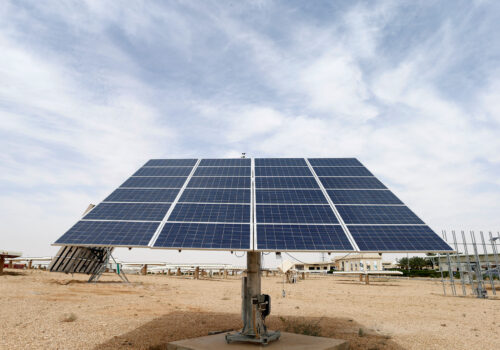
Energy
The impact of climate change on Saudi Arabia’s energy sector is multifaceted, affecting both the production and consumption of energy. As cited earlier, climate change is expected to significantly increase temperatures in Saudi Arabia, with projections suggesting a rise of up to 5.6°C by the end of the century under the most extreme scenarios.
Read more
This will likely lead to higher energy demand, particularly for cooling during the hot summer months, straining the country’s power generation and distribution systems. On the other hand, the Kingdom’s economy, heavily reliant on oil and gas exports, faces risks from global shifts towards renewable energy and the potential for reduced oil demand. In response, Saudi Arabia is actively pursuing an orderly transition to renewable energy as part of its Vision 2030 initiative. The Kingdom has set ambitious targets to generate 50% of its electricity from renewable sources by 2030. Currently, efforts are underway to expand solar and wind capacities, although as of 2022, renewable energy accounted for less than 1 percent of the total electricity generation mix. The kingdom has pledged to reach net-zero carbon emissions by 2060, which involves substantial investments in carbon capture and storage (CCS) technologies and other green initiatives.
The Saudi Green Initiative (SGI), launched in 2021, represents a significant financial commitment towards reducing emissions, with over $186 billion earmarked for green projects. These include reforestation efforts and the deployment of CCS technologies to mitigate emissions from fossil fuel production . The kingdom is also focusing on becoming a leader in green hydrogen production, which is seen as a critical component of the global energy transition.
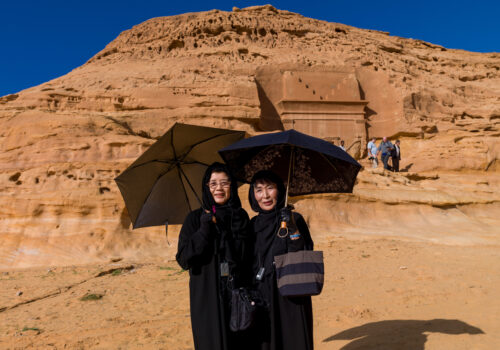
Tourism
Tourism is integral to Saudi Arabia’s economic diversification efforts, reducing reliance on oil revenues. The sector is poised to create numerous jobs and generate new revenue streams. However, climate change poses risks to this strategy by potentially affecting the viability of tourist sites and increasing operational costs.
Read more
The impact of climate change on Saudi Arabia’s tourism sector is significant, with various challenges arising as the Kingdom seeks to balance environmental sustainability with its ambitious Vision 2030 tourism goals, aiming to transform Saudi Arabia into a global tourism destination, emphasizing sustainability and environmental protection. Rising temperatures, will likely alter the seasonal patterns of tourism in Saudi. Extreme heat during summer months may deter visitors, especially those from cooler climates, pushing the peak tourism season to the milder winter months. This shift necessitates infrastructural adjustments to accommodate fluctuating tourist numbers and to provide comfortable experiences year-round.
At the same time, Saudi Arabia’s Red Sea coast, a focal point for tourism development, faces threats from rising sea levels, increased sea temperatures, and coral bleaching. These environmental changes could impact marine biodiversity, a key attraction for tourists. Research and conservation efforts in Saudi are ongoing to protect and restore coral reefs, which are vital for maintaining the attractiveness of marine tourism. Innovative solutions, such as microbial therapy and 3D printing for reef restoration, are being explored to enhance resilience against climate change.
By the 2050s, Saudi Arabia will experience nearly 20 heat waves annually (including during winter), each lasting about 10 days.
After 2030, the annual evaporation rate in KSA will be 40 percent higher than the precipitation rate, contributing to groundwater losses and increased salinity.
Sea level rise, coastal erosion, and altered storm patterns could expose 210,000 Saudis to devastating floods by 2050 in a high emissions scenario.
Precipitation variability is predicted to fluctuate as much as 60 percent from one year to the next, increasing exposure to droughts and floods alike.
In a high emissions scenario, the Saudi GDP is projected to shrink by more than 12% by 2050.
Additional climate profiles





